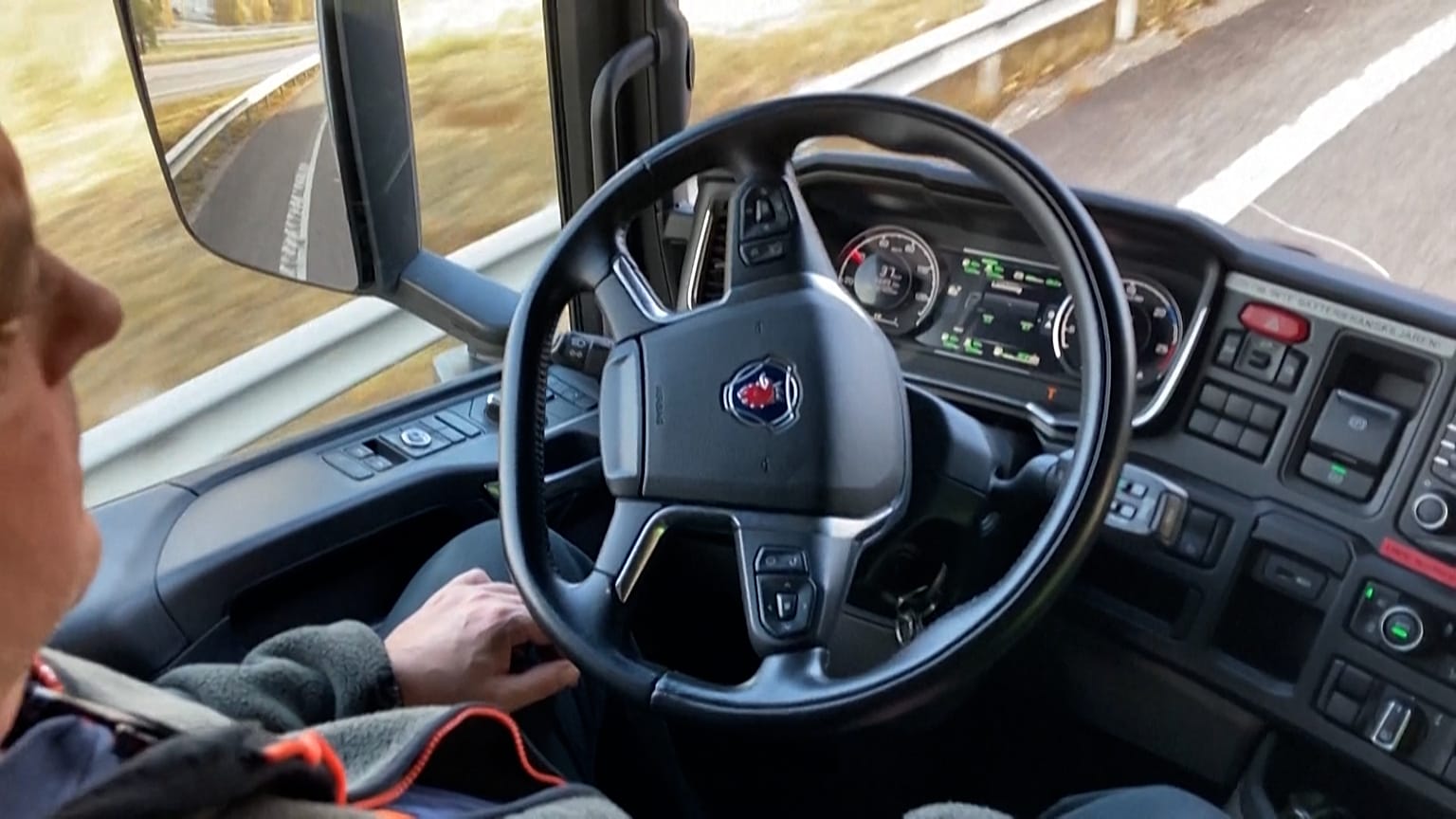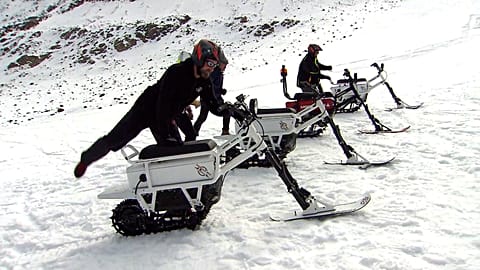For now, as part of the pilot project led by Scania, a safety driver has to remain behind the self-driving wheel.
This 40-tonne lorry, barrelling down a Swedish motorway, has a driver onboard but no hands touching the wheel.
Here, veteran truck driver Roger Nordqvist is merely supervising the vehicle in case any problems arise as it drives itself autonomously.
Swedish truck manufacturer Scania is far from the only company developing autonomous vehicles, but it has the distinction of being the first in Europe to pilot them while delivering commercial goods.
"We take their goods from point A, drive them to point B, fully autonomously," Peter Hafmar, head of autonomous solutions at Scania, told AFP outside the company's transport lab in Södertälje, south of Stockholm.
In the pilot project, the self-driving truck is covering a stretch of some 300 km between Södertälje and Jönköping in the south of Sweden, delivering fast-food goods.
The lorry looks mostly non-descript from the outside save for a rail on the roof packed with sensors and cameras which allow it to safely manoeuvre itself.
Inside the cab, the wheel and seats are where you'd expect to find them, but small devices and screens dot the dashboard and a nest of wires run to the computer rack housed behind the passenger seat.
'Drives better by itself'
Engineer Goran Fjallid sits next to the safety driver in the passenger's seat, eyes glued to his laptop as it receives video from the truck's cameras and flickering text with information about what the vehicle is seeing.
A second screen shows a 3D-visualisation of the truck on the road and all nearby vehicles.
The lorry combines all the inputs from the various sensors with a GPS system, with the different technologies acting as back-ups for each other.
"If the road markings disappear for a while, then it will use the GPS and it stays perfectly in its lane," Fjallid explains.
"It drives better by itself than when you drive it manually," he adds.
Fjallid acknowledges that a lot of trial and error has gone into getting the truck to this point.
They've had to tweak things, like how the truck handles merging onto the motorway, and what to do when another car cuts in front of it.
Every time the truck does something unexpected, such as braking or slowing down for no apparent reason, Fjallid makes a note of the exact timing so the logs and data can be examined.
The lorry's sensors are also calibrated daily before hitting the road.
Hafmar says there are still technological and legislative hurdles to clear before unmanned driverless trucks become a common sight on roads, but Scania expects to have this ready by the end of the 2020s or the beginning of 2030s.
No more truck drivers?
The advent of self-driving trucks can be seen as a threat to the jobs of truck drivers, one of the world's most common professions.
But Hafmar insists autonomous vehicles are needed to address a global driver shortage.
And, he adds, it will be a long time before artificial intelligence will be able to handle all aspects of logistics.
Initially, self-driving lorries will likely be used for long-haul trips, but the last-mile distribution to shops and customers "will happen with human drivers", Hafmar adds.
According to a recent report from the International Road Transport Union (IRU), there were some 2.6 million unfilled positions for truck drivers around the world in 2021.
According to Hafmar, another benefit to the system is that computers don't need to sleep or rest, so the vehicles can be scheduled for trips at times when there is less traffic, or drive slower for longer - which can save on fuel.
A host of other companies are also in the race to get self-driving trucks on the road.
Start-ups like Aurora, Waymo, Embark, Kodiak and Torc (together with Daimler) are running tests in the United States, while China's Baidu announced a self-driving truck in late 2021.
In Europe, IVECO is working with Californian start-up Plus, supported by Amazon, and recently announced the end of their first phase of circuit testing. They will also launch road tests.
Swedish company Einride also plans to launch road tests in Germany soon.
For more on this story, watch the video in the media player above.


















